Missionary Stories
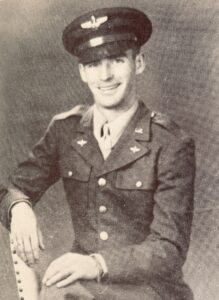
It was 1944 and WWII was still raging. Twenty-eight-year-old Mel Rutter and his battalion were sent to New Guinea to hunt for Japanese soldiers. After they arrived and were awaiting permanent orders, they had a lot of free time on their hands. These American soldiers had much uncertainty and fear in their minds and hearts. Being far from home, family, and facing certain death at any moment fostered a mindset of “eat, drink, and be merry, for tomorrow you die.” Sin was rampant: liquor, gambling, cursing, and obscene stories were the norm.
Mel, a young Christian, was saddened by such sin against His Lord and Saviour. To get away from it, he began walking, and before he realized what he was doing, he was deep into the jungle! In 1944, it was not safe to wander into the jungles of New Guinea where cannibal tribes still lived. Suddenly, his fears took shape in the form of a native cannibal standing right before him saying, “Hubba, hubba,” in broken English. Horror washed over Mel as he saw the filed-down, pointed teeth in the smiling face of this cannibal. Then Mel noticed the Book tucked under the cannibal’s arm. Never had his soul been so stirred and thrilled! This ex-cannibal was carrying a Bible! He looked at Mel, grinned with those pointy teeth, and asked, “Is white boy Christian?” Only God could orchestrate such a Divine appointment as this. Mel’s heart was greatly impressed by this humble ex-cannibal— a REAL missionary out telling anyone who would listen about becoming a Christian!
Back in America and years later, after attending two seminaries and pastoring three churches, Mel and his wife surrendered to missions. They sold all their belongings and went to Mexico. Two years later, they returned to Dallas where they taught missions for a year. Next, they went to Chile, South America. A year after that, they went to Costa Rica and attended language school to extensively study the Spanish language. Mel and his wife Dorothy then went to Peru, South America, and worked with Peruvians and the Quechua Indians for a number of years before returning to the States for health reasons.
In 1961, Mel and Dr. James W. Crumpton founded Maranatha Baptist Mission. At one time, it had one hundred twenty-five missionaries serving in eighteen countries and at home. For thirty-nine years, Mel was an international representative of Maranatha Baptist Missions. He died on December 30, 1999.
Have you had any Divine appointments? Is God moving you toward missions? Are WE fulfilling God’s Great Commission? Oh, that the love of Christ would fill us and overflow to the uttermost creature!
Winter 2024-25
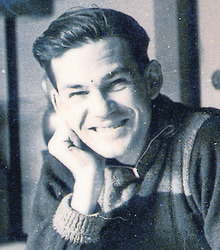
On June 7, 2014, Stephen A. Metcalf, a faithful church planter and evangelist to Japan, passed away. He ministered in Japan for forty years with his wife Evelyn and their five children. However, Stephen did not always want to be a missionary to Japan.
Stephen was born on October 23, 1927, to George and Bessie Metcalf. The Metcalfs were missionary translators in Taku (now Dao-Gu), a mountainous Lisu village one weeks walk from Kunming, the capital of Yunnan Province in Southwest China. At a young age, Stephen learned to fluently speak English, Mandarin, and Lisu. In 1934, when he was seven years old, his parents took Stephen to join his sister Ruth at a boarding school in Yantai. Except for Christmas visits, Stephen grew up in Yantai and rarely saw his parents.
By 1937, World War II was imminent. The Japanese invasion of China did not affect Stephen until 1942 when he and his schoolmates were imprisoned. Sickness continually plagued the filthy, cramped attic where the nineteen young men were initially quartered. Hepatitis A and a raging fever nearly killed Stephen, but God miraculously spared his life. As he lay weak and alone, his conscience convicted him of his sins. Overwhelmed, Stephen confessed His sins and believed that Jesus Christ died and rose again for him. In the following months, Stephen’s faith grew through missionary biographies that fellow inmates lent him. By the time Stephen was moved to the Weixian internment camp, God had taught him perseverance, faithfulness, and thankfulness. However, Stephen struggled to learn forgiveness.
Who could blame Stephen for despising the Japanese? His circumstances appeared to justify his attitude. Over two-thousand men, women, and children were confined within the sixty-acre internment camp. Sanitation was deplorable; water was inadequate; food was rationed; and medical supplies were scarce. Self-preservation was the daily mode of life. Individuals who retained ethical and religious convictions were either admired or scorned. Yet one such man’s godly character influenced others in Weixian.
Eric Liddell, famous Scottish Olympic gold medalist and missionary, chose Christlikeness over self-centeredness. Of all the prisoners, he easily could have demanded his rights and misused his influence. At the pinnacle of his athletic career, he left Scotland to be a missionary teacher in China. Instead of evacuating the country with his family in 1941, Liddell remained. He firmly believed that only faithful obedience honors God, despite any personal cost. Even in Weixian, Liddell continued obeying God as he served his fellow prisoners.
In 1945, just months before World War II ended, Stephen heard the words that impacted the rest of his life. During a Bible study on Matthew 5:43-48, Liddell taught: “When you hate, you are self-centered. When you pray, you are God-centered. Praying changes your attitude. It is hard to hate those you pray for.” Listening, Stephen was deeply convicted. He realized Liddell’s personal obedience to the Truth had changed his attitude toward the Japanese guards. God used Liddell’s testimony to break Stephen’s unforgiving heart. Together, the men began praying for their captors.
Days later, Liddell approached Stephen with a pair of patched running shoes. Stephen’s own shoes were completely worn, useless protection against the winter temperatures. Unconscious of his friend’s personal sacrifice, Stephen gratefully accepted them. Only weeks later did Stephen realize that he was walking in Liddell’s shoes.
One month later, tears stung and blurred Stephen’s eyes as he gazed down at his shoes. He tried to steady himself under the weight of his friend’s coffin. Though a brain tumor silenced Liddell’s earthly voice, his words echoed in Stephen’s memory. As he reflected on Liddell’s life, Stephen’s grief suddenly turned to resolution. At that moment, before God, he vowed to go to Japan as a missionary after the war.
Liddell’s obedience influenced Stephen’s obedience. Years later, in 1952, Stephen recalled Liddell’s words again as he began his life-time ministry in Japan. He no longer wore Liddell’s physical shoes, yet he daily walked in Liddell’s spiritual shoes. Both men’s obedience resulted in countless Japanese salvations!
When we obediently live the Truth, others will believe the Truth. Obedience reveals Absolute Truth which powerfully transforms lives for eternity. Through His own obedience, Christ fulfilled the law and the prophets, demonstrating that the Word of God is Truth. His obedience to the Father’s will changed men’s eternal destinies (John 5:30, 6:38)! Christ set the example for us (Phil. 2:8; Heb. 5:8; 1 Pet. 2:21). His obedience cost Him everything. Likewise, obedience will cost us everything. Nevertheless, Christ’s obedience commands and compels our own obedience. We have a choice. We know the Truth. Yet Truth without obedience will never save a lost and dying world.
Christ wore the shoes of obedience, and He commanded us to follow Him. Obedience is a personal choice in response to a personal command. Though initially individual, our choice is eternally influential. Will we obey the Truth? Will we walk in Christ’s shoes? Will others walk in our shoes?
Spring/Summer 2023
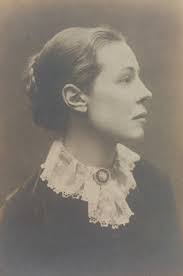
“Satan knows well the power of concentration.” Do we? Do we dare to focus on Christ with such genuine intensity that His glory is our only motive and consideration for every choice we make?
In October 1876, John Ruskin, a famous English painter and severe art critic, consented to evaluate a young woman’s artwork. Astonished by her exceptional portrayal of artistic elements and principles, Ruskin immediately offered to train the artist. As time progressed, he declared that she was a rare talent destined to become one of the century’s greatest English artists.
The young artist, Isabella Lilias Trotter, was born on July 14, 1853, to an affluent family in London. Her godly parents intentionally instilled spiritual truths in her life which blossomed following her salvation. Lilias’s love for art was matched only by her passion for ministry. When faced with a choice between the fortune and fame of an artistic career and a simple life of service, Lilias chose to relinquish her rights to her talent and follow Christ. In 1879, she journaled: “Are our hands off the very blossom of our lives? Are all things—even the treasures He sanctified—held loosely, ready to be parted with without a struggle when He asks for them? It is a loss to keep what God says to give.”
After she surrendered her life and talents to Christ, He opened His way before her. At a mission conference in 1887, Lilias clearly knew that God wanted her to go to Algeria, North Africa. The following year, she moved to Algeria where she ministered to Arabs until her death in 1928. Although she worked closely with North African Mission, the ministry never accepted her as a missionary because her heart was weak. However, Christ was Lilias’ focus; nothing could dissuade her obedience. For the next thirty-nine years, she faithfully ministered to Algerian women and children through Bible studies, prayer meetings, and literacy classes. Her artistic and literary talents enabled her to write and translate many tracts, parables, Christian literature, and Scripture portions into both classical and colloquial Arabic. During her later ministry, Lilias and her team pioneered work among the Arab Sufi mystics in the Southlands of Algeria. When her weak heart left her bedridden, she continued writing. The famous hymn, “Turn Your Eyes Upon Jesus,” was inspired by Lilias’ booklet Focussed, in which she wrote: “Dare to lay bare your whole life and being before Him, and ask Him to show you whether or not all is focused on Christ and His glory.”
Lives are legacies, yet only Christ-focused lives leave legacies of faithfulness. Focused lives fearlessly follow Christ without hesitation at the cost to oneself, family, friends, or ministries. “Christ—Christ—Christ—filling all the horizon. Everything in us: everything to us: everything through us. ‘To live is Christ.’—Amen.”
Is our focus changing our lives? Do we dare?
Quotations from A Passion for the Impossible by Miriam Huffman Rockness
Winter 2022-23

Isaac McCoy was born in Fayette, Pennsylvania, in June 1784. He was the son of a Baptist preacher who, as incredible as it sounds, did not believe in evangelizing. Isaac and his father argued over this, but Isaac was not afraid to stand for the truth. He became a missionary to the Native Americans. Before moving west to the wilderness of Indiana and Illinois, Isaac pastored a church for seven or eight years. His first missionary assignment paid him $500 per year, and he worked with the Weas, Miamis, and Kickapoos in Indiana. He later worked with the Pottawatomie tribe in Michigan.
McCoy used education as a tool to evangelize children. In 1820, he moved to Fort Wayne and opened a school with ten English pupils, six French pupils, eight Indian pupils, and one African pupil. By the end of the year, he had thirty-two Indians living in his own home as members of his family! A year later, he reported that he had forty-two pupils. In 1822, he began a temperance society and made his first trip to Washington D.C. to plead for fair treatment for the Native Americans. Our government was shamefully famous for making and breaking treaties with the Indians They stole their land, relocated them, and viewed them as something less than human. However, Isaac McCoy did not see the Indians this way. He loved a people that others despised.
For many years, McCoy served under federal appointment as a commissioner, surveyor, or teacher among the Native Americans. On a trip to Washington [believed to have been in 1829] to report on his exploration, he visited the Mission Board in Boston. He found them making pleas for missionaries to Burma (Myanmar), Africa, and other countries, but not to the Native Americans. Not everyone shared McCoy’s burden to reach them. Some believed that the Indians would soon die out; therefore, they believed there was no need to evangelize them.
In 1828, McCoy preached the first Baptist sermon ever heard in Chicago. In 1832, he was present in the organization of the first Baptist church in the Oklahoma Territory. He was instrumental in the founding of Grand Rapids, Michigan, and Kansas City, Missouri, where he lived until 1842. At that time, McCoy moved to Louisville, Kentucky and established the Indian Mission Association. On a return trip from Jeffersonville, Indiana, he was exposed to severe weather which resulted in a serious illness that caused his death on June 21, 1846. His dying words were, “Tell the brethren to never let the Indian mission decline.” It was said of him, “The American Indian never had a better friend than Isaac McCoy.”
Fall 2022
 There was no headstone for Charlotte Rowe until her name was uncovered among the missionaries appointed by American Baptist International Ministries during research as it prepared for its 200th anniversary.
There was no headstone for Charlotte Rowe until her name was uncovered among the missionaries appointed by American Baptist International Ministries during research as it prepared for its 200th anniversary.
Charlotte White Rowe was the first woman missionary to be officially appointed from the United States by any denomination or agency. Charlotte was born in 1782. Her early life was marked by sadness. She was orphaned at age twelve and widowed at twenty-two. She moved to Massachusetts where she was saved and joined First Baptist Church of Merrimac.
In 1813 Charlotte moved to Philadelphia and joined the Sanson Street Baptist Church. There she met and joined Charles and Phoebe Hough who were going to Burma to help Adoniram Judson with printing work. She applied to the Baptist Board of Foreign Missions in the summer of 1814. After much discussion, the majority consented to her approval but then said they did not have the funding to send her. She pledged her own small estate to the work and left for India. The next year, the mission society’s new ruling forbade the appointment of single women missionaries.
After four months at sea, Charlotte and the Houghs landed in Calcutta and traveled to Serampore. It took two months for them to arrange shipping for the printing press and supplies to Burma. During that time, she met missionary Joshua Rowe, a widower with three small boys. They were married and Charlotte stayed in India with her new family while the Howes went on to Burma.
Charlotte’s first task was to learn the local language, Hindi. She was a remarkable linguist and learned so quickly that she soon began establishing schools. It wasn’t hard to get native teachers for the boys. To get teachers for the girls she had to hold classes and train the women first. Her resources were limited so she began writing schoolbooks in Hindi.
After only seven years of marriage, with six children and a busy and thriving ministry, Joshua Rowe died. Charlotte was only financially able to continue for an additional three years. She traveled to London in hope of being appointed by the British Mission society, only to find that they, too, had established a ruling against single women missionaries. She then worked to raise passage back to the United States where she ran a boarding school with the help of her twin daughters until the girls died, one in 1851 and the other in 1852. Charlotte died in 1863 at the age of eighty-two and was buried beside her twin daughters in an unmarked grave.
“I am but a mere instrument in God’s hand . . .” —Charlotte Rowe
Summer 2022
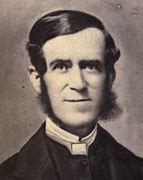
1815 – 1872
“The love of Christ banished the terrors of the law.” Those were the words of John Geddie concerning his salvation at age nineteen in 1834. He tirelessly preached this same message of Christ’s love as a missionary in the New Hebrides islands for twenty-four years.
John was an avid reader; his favorite subject being stories of mission efforts and the desperate need of the Gospel in unevangelized areas. After completing secondary school at Pictou Academy in Nova Scotia, he studied theology. Small and slightly built, he was often referred to as “little Johnnie.” While at seminary, his health became so poor that he was told to give up his studies. He promised the Lord that if his health were restored, he would go as a missionary to a heathen land. On March 13, 1838, he was ordained and began pastoring a church on Prince Edward Island.
During his time as pastor, he promoted foreign missions which was a new idea to the colonial churches. Up to this point, they had sought financial aid for their own work, but had not considered sending out missionaries. It took several years and many pleas, but a mission society was finally formed. John and his wife were the first missionary volunteers. Their destination was Aneiteum, an island in the New Hebrides where people practiced cannibalism.
The Geddies arrived in New Hebrides in 1848 and soon felt the reality of their situation. They were on an island, surrounded by people from whom they had much to fear and whose language and customs they did not know. Geddie wrote, “We have His promise, at whose command we have come hither, ‘Lo, I am with you alway.’”
Their first task was to learn the unwritten Aneiteumese language. Then they began to print materials and teach the people to read. After three years and much labor, John had won a total of ten people to the Lord. Several times, while walking the trails, spears and clubs were thrown at him. He once faced an angry crowd of men who threatened to kill him for interfering as they strangled a young widow to death that she might “join her husband in the afterlife.” He unwittingly violated some cultural taboos and made the chieftain angry. But eventually the message of Christ’s love penetrated the hearts of the people and hundreds turned to the Lord.
As people were saved and their lives changed, John began to teach them and send them out to other islands with the message of the Gospel. People came from all over the region to see what had happened in Aneiteum. One group even brought a pig in the hopes they might use it to purchase a teacher to take back to their village. When John Geddie died on December 14, l872, a tablet was placed behind the pulpit of the church in Anelcauhat which reads: In memory of John Geddie, D.D. When he landed in 1848, there were no Christians here, and when he left in 1872, there were no heathen.”
Spring 2022
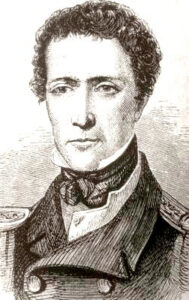 Allen Gardiner paced up and down the street, ashamed to go into the bookshop and ask for a Bible. He had thrown aside his religious upbringing at the young age of fourteen for the rowdy life of a sailor, but now he needed answers. The letter that arrived, telling of his godly mother’s prayer for him before her death, struck his heart with a desire to read the Book that he knew held life’s answers. Secreted with the newly purchased volume in the quiet of a Chinese temple, Allen Gardiner came to faith in Jesus Christ.
Allen Gardiner paced up and down the street, ashamed to go into the bookshop and ask for a Bible. He had thrown aside his religious upbringing at the young age of fourteen for the rowdy life of a sailor, but now he needed answers. The letter that arrived, telling of his godly mother’s prayer for him before her death, struck his heart with a desire to read the Book that he knew held life’s answers. Secreted with the newly purchased volume in the quiet of a Chinese temple, Allen Gardiner came to faith in Jesus Christ.
With an earnest drive for missionary work, Gardiner went to South Africa in 1834 to win the Zulus to Christ. Although they were notorious for savagery, he brought about peace between the warring tribespeople and opened the door for missions among them. When war broke out between the Dutch settlers and the Zulus, it became impossible to continue the work, and he set his face toward South America.
As he traveled through the continent of South America, seeking to work with the native tribes, he was repeatedly thwarted by governmental regulations, Jesuits, or lack of funding. He also sought to go to New Guinea but was told, “You might as well try to instruct the monkey as the natives of Papua…they’ll never be any different.” Gardiner retorted, “They are men, not animals, and they are included in our Saviour’s command to preach the Gospel to every human being.” Though access was denied him, he did not give up.
He turned to Tierra del Fuego, knowing there was no government or religious system to deny his entry. Two previous attempts to land there had taught him that the Fuegians were violent and thieving. His team, totaling seven men, arrived in December of 1850. The mission began to fail the moment it started. Part of their supplies were left on the ship that landed them, and most of the rest was stolen by the Fuegians who also drove them from the coastline. The men took refuge in a nearby area but were unable to find enough food to survive. One by one, they starved to death. The scheduled supply ship returned twenty days after the last entry in Allen Gardiner’s journal.
Their death created worldwide headlines. Most condemned their “folly and failure” in the venture, but it stirred the heart of the church. A new mission team was sent and, after much turmoil, succeeded in winning many of the Fuegians to Christ.
Twenty years earlier, Charles Darwin had stated that it was “completely useless to send missionaries to savages such as the Fuegians, probably the lowest example of human race.” Darwin later saw for himself the difference the Gospel had made. He was astonished at a people so changed physically, mentally, and spiritually that he not only stated his belief in the regeneration of the people but contributed to the South American Missionary Society during the rest of his life.
Winter 2021-22
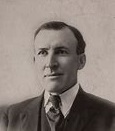
“I looked my guard over. He wore two belts of cartridges, a dirk knife and carried a rifle with a bayonet . . . I prayed, ‘Lord, you can handle him better than I can. You just put the fear of God in him and make him leave me here alone.’ Then I began staring at the guard as though I might eat him if he got too close. He began to get nervous; he twisted his hands and walked to and fro. In a few minutes, he started off. When he was about fifty yards away, he raised his rifle and cocked the hammer. I was looking at the shooting end. I could only pray, ‘Lord, if you don’t want him to kill me, just don’t let him pull that trigger.’ The Lord answered, for the bandit started off down the trail.”1
Born in north central Texas in 1885, the eldest son of a ranching family, Rex Ray learned early to work hard, to persevere regardless of his circumstances, and to hold to his responsibilities “come wind, come weather.” His father unexpectedly died at a young age, and Rex, at only fifteen years old, took over the responsibility of caring for his mother and younger siblings. Rex resisted the Gospel message as a teenager and entered college at the age of twenty intending to be a successful businessman. God had other ideas. Rex was saved during a revival meeting in a Baptist church. Later, after spending a week going to the cornfields every night to pray, he answered God’s call to the mission field.
Rex and his wife, Janet, served the Lord in China through the waves of turbulent attacks by the Japanese during the Second Sino-Japanese War (1937-1945) and takeover of communism in 1949. During that time, not only was Rex kidnapped by bandits, but he also ran blockades to provide supplies to the mission hospital and survived air raids and bombings. He buried his five-year-old daughter on the field. Through it all, he preached. Up and down the rivers and through the villages, thousands of precious souls heard the Gospel of Christ as he desperately gave the message of Christ while the doors were still open to do so.
When the doors to China slammed closed, Rex and Janet (their children now grown) answered the call to take the Gospel to war-torn Korea.
This only scratches the surface of what happened during Rex Ray’s forty-eight years on the mission field. His passion for the Gospel and his love for the Chinese and Korean people speak from every page of his autobiography.
In a letter to the Foreign Mission Board, published in the September 1928 Home and Foreign Fields, Rex Ray said, “Oh, that our voices could be multiplied into thousands to help rescue these millions who are lost, lost, lost! The Spirit of God is moving the hearts of the heathen. Oh, that He would awaken His children in Christian lands to the crying needs of this great harvest field! If Christian America fails to deliver God’s message to the lost of earth, what shall we answer the Master as these poor souls turn away from the gates of Glory into outer darkness?”
1Cowboy Missionary in Kwangsi, Rex Ray

John and Betty Stam
The anticipated knock at the door came suddenly. The rumors were true. The Communists had arrived to arrest them.
John and Betty Stam had met each other in a prayer meeting for China. Their friendship grew into love, but their applications for mission work put them in different corners of the country. Believing God’s work should come before human affection, they committed the matter to the Lord. Through a series of events, Betty ended up in Shanghai, the very place John had been stationed. Within two years, they were engaged, married, and had a newborn baby, beautiful little Helen.
On this particular day, a loud knock came at the door, signifying the Communists’ arrival. Although they had been warned, it was too late for the Stams to flee. The Communists barged into their home, demanded all their money, bound John, and took him to their headquarters. They later came back for Betty and baby Helen.
In a letter which John was allowed to write to China Inland Mission, he said, “We were too late. The Lord bless and guide you. As for us, may God be glorified, whether by life or by death.”
Taken twelve miles on foot to Miashea, the location for their execution, the Stams spent the night in the home of a wealthy man who had fled to safety. John was chained that night, but Betty was given enough freedom to tend to the baby. The next morning, they were led to the execution site. When asked by the postmaster where they were going, John replied, “I don’t know where they are going, but we are going to heaven.” They were both executed by beheading in front of a terrified crowd.
The Christians in the city fled to the mountains and stayed in hiding for two days. A Chinese evangelist, Mr. Lo, ventured back into town, but the people were too fearful to tell him who had been executed. After much effort, he discovered it was the very missionaries he had been working with and that their baby had been left behind.
Mr. Lo searched the house where the Stams had spent that last night. It had been ransacked, but during his search he heard a soft cry. Baby Helen had been left in a sleeping bag by her mother along with a few supplies and ten dollars. That money was used to finance the trip that carried her to safety. Helen was taken to a missionary in another city, and today she lives in the US with her husband and family.
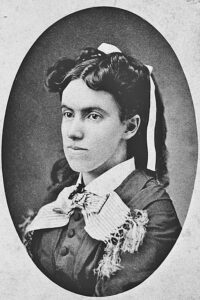
“I would I had a thousand lives that I might give them to…China.” —Lottie Moon
Lottie looked all around her to see that the people whom she loved so dearly were starving to death. She didn’t have much to give them, but what she did have, she gave. But now Lottie’s health was failing; her weight was down to fifty pounds. Fellow laborers felt it was time for her to go home. At the golden age of seventy-two, she boarded a ship headed for the United States and home, but she never made it out of Asia. On Christmas Eve 1912, Lottie Moon died on board the ship in the harbor at Kobe, Japan.
To some, this woman’s dedication was a miracle. If you were to ask her relatives if they thought she would die for Christ, they would have scoffed. Lottie Moon, at the height of four feet three inches, was an unruly child, full of mischief and rebellion. She made it a point to make a mockery of the Gospel and her family’s Baptist faith.
While Lottie was in Virginia attending Albemarle Female Institute, a local Baptist church hosted a revival meeting. Some of Lottie’s friends invited her to go, but she refused. They got together to pray for her by name, and God answered. She went to one of the services to appease those friends but had no idea what was about to occur. That evening, when she could not sleep, Lottie fell to her knees and trusted Christ as her Saviour. Her family noticed an immediate change in her.
Lottie’s sister, who had already served in China, pleaded with Lottie to consider overseas service. This, coupled with God’s leading, took Lottie to China where she would serve Him faithfully until she died forty years later. She became one with the Chinese; she learned their language, dressed as them, ate as them, and poured her very life into them.
Missionary men could not minister to women in China; only women could reach Chinese women. One way in which Lottie evangelized them was by taking little tea cakes or cookies to them. That got the attention of both the women and the children! They called her the Cookie Lady and listened to her. She traveled many miles to witness and proclaim Jesus. As a result of her faithfulness, hundreds of converts came to Christ. She pleaded with the churches in the States to send more laborers and more funds to help with the much-needed ministry in China, but they could not see the burden as Lottie saw it.
Lottie lived, worked, breathed, and died in the service of her Lord. She is an example of what a true servant of the Lord is; one willing to sacrifice everything and leave all to follow Christ. What an example for us to follow! He is worthy of our all!
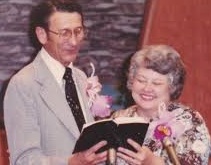
Lavern and Evelyn RodgersA bomb wrestled through the air, while the loud cracks of the blast set homes ablaze. The people of war-torn Japan sat in the darkness of an uncertain eternity. Soon after, former Navy man Lavern Rodgers and his wife, Evelyn, arrived with the good news of the Gospel.
In 1945, Lavern Rodgers first heard his Macedonian call through the exhortation of General Douglas MacArthur who, quoting Matthew 5:44a: “Love your enemies,” made the appeal for 15,000 missionaries to come to Japan. Lavern Rodgers knew that in order to follow God’s call on his life, he would have to replace his personal hatred for the Japanese with God’s love for them. He wrestled with the Lord. Would he do the unimaginable and go tell His enemies about Christ? Knowing he could never win a fight with God, he surrendered.
To prepare, he attended Bible Baptist Seminary in Fort Worth, Texas, where God spoke to him through a quote from William Carey: “Attempt great things for God. Expect great things from God.” With these words ringing in his ears, he and his wife, Evelyn, took the rocky boat voyage to Japan in September 1950. After thirty-three days, the Rodgers finally arrived in the bombed out city of Yokohama. Even Shizuoka, the city where they began their first work, was 60% destroyed. In the midst of these depressing surroundings, they kept their eyes on Jesus.
The Lord opened up amazing opportunities for church plants to begin. They were able to start churches in nine different cities between 1950 and 1967. Lavern Rodgers said that “Planting churches is like planting trees. They are foundational to a Biblical ministry. These are our trees.” But building a church in post-war Japan was not going to be an easy task. He and his friends had to tear down buildings and reuse the scraps to build their first church in the city of Shizuoka. This was a great lesson for the Japanese people, because it taught them to use what God provides.
Many young Japanese would soon attend the services. A girl named Sachiko Saigo Yasuba described the church as having a warmth and brightness she had never experienced. As a struggling wife, she came looking for pity but instead found a warm greeting from Evelyn Rodgers who took her by the hand and showed her the Romans Road. Sachiko was amazed to learn that she did not know God. This was the reason she had so much trouble and wrong in her life! Overcome with the knowledge of her sin, she wanted to throw herself on the Lord and no one else. With open arms, she received the Lord as her Saviour that day, and all the darkness became light.
Lavern Rodgers is ninety-three years old and still resides in Japan. He once said, “There is nothing more rewarding in life, than going where God’s finger points.” Will we go where God’s finger points us? Or will we, like Jonah, refuse to go? We must spread the message of Jesus, for only His light can vanquish the darkness!

Bob and Liz PattonIt was September 1986 and the Pattons’ plans were drastically changed when Dr. Patton opted to move to the city rather than join forces with the liberal group in control of medical practice in the interior of the country. It had been just two weeks since the couple had moved to Suriname’s capital, Paramaribo, when civil war broke out in the interior. Had the couple stayed in the interior, they would have been cut off from their mission while in only the beginning stages of language learning. God had a definite plan for them in Paramaribo.
Upon graduating from the University of Rochester in 1971 as an Internal Medicine Specialist, Robert Patton had embarked for Liberia, Africa, where he served as professor and head of Internal Medicine at the University of Liberia until 1976. More importantly, it was there in Liberia that he accepted Jesus Christ as his Saviour in 1974. Surely, he never imagined then where God would later lead him and what monumental tasks he would accomplish in just twenty-four years.
In 1986, the Pattons found themselves in Suriname learning the national languages of Dutch and Sranantongo. For the first five years he was in Suriname, Dr. Patton taught at University Hospital in the mornings and dedicated his afternoons and evenings to soul-winning, language learning, church planting, training national pastors, and establishing various ministries. During this time, Dr. Patton grew increasingly frustrated with the limited scriptures available in the Sranantongo language. He was using a Moravian translation of the New Testament from the 1800s, but its imprecision and antiquity made it a less than desirable version upon which to build a ministry. Furthermore, Dr. Patton longed for a translation of the Old Testament. In 1991, God showed him clearly that he should resign his teaching position and begin translating.
Dr. Patton approached this very serious project with fear and trembling. He worked carefully and steadily to translate a Bible faithful to the Received Text into Sranantongo. The translation team included himself and six natives. First, Dr. Patton studied the scriptures under consideration, consulting a conservative commentary when necessary for clear understanding; then he made a preliminary translation and passed it off for independent review by two nationals (separately). Two more cycles of revision by Dr. Patton and review by other nationals then followed. After a final revision, it was considered complete. The entire Bible was translated by 1997 and published by Bearing Precious Seed in 1998.
God blessed the Pattons’ diligent work. Not only is their Bible translation the most sold version of the Sranantongo Bible in Suriname, but it has also been shared through their radio programs. Dr. Patton has synthesized commentaries using his translation notes and their corresponding scriptures. These commentaries are helpful resources for national pastors and have also been broadcasted via radio.
You can read more about Dr. Patton on his website, teachingmissions.com.
Summer 2020